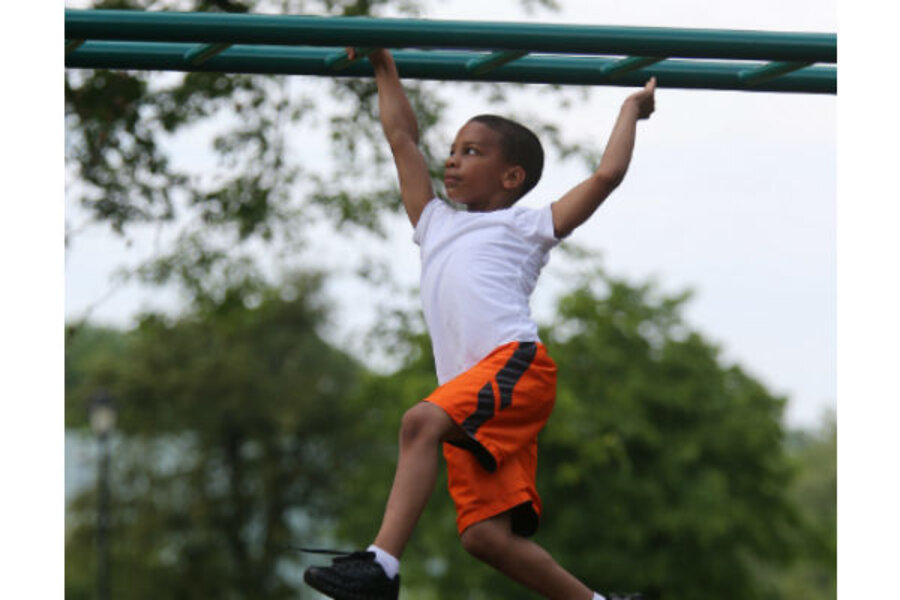Recent stories from The Atlantic and NPR profile playgrounds in the UK and US that have been constructed – or deconstructed rather – to encourage kids to engage in what is considered “constructive play.” That can mean a lot of things, including building something with tools, lighting a fire, painting a sign, or seeing what happens when you roll down hill in a plastic bucket.
Reports show that since the late 1970s and early 1980s, when lawsuits related to playground safety increased, parents and others have ratcheted up safety measures for kids. Some experts that led the early charge to change safety standards for playgrounds have come forward to say that we may have taken safety to an unhealthy extreme.
The Atlantic article, "The Overprotected Kid," points to Joe Frost, an influential early crusader for child safety, who helped to encourage safety measures like rubber flooring on playgrounds. After years of pushing for safer playgrounds, Mr. Frost published a 2006 paper raising concerns that federal guidelines for playground design may have gone too far in the opposite direction. In the paper he writes, “In the real world, life is filled with risks – financial, physical, emotional, social – and reasonable risks are essential for children’s healthy development.”
According to the NPR story “Where the Wild Things Play” which explores one free-form playground in Berkeley, Calif, Dr. Stuart Brown, the founding director of the National Institute for Play says, "It's really central that kids are able to take their natural and intense play impulses and act on them.”
He adds that when in play, children need an environment, with "the opportunity to engage in open, free play where they're allowed to self-organize.”
Progressive playground designs in Norway, Germany, and England are inspiring US design as well. A 2012 Wall Street Journal piece "Are Playgrounds too Safe?" profiles three playgrounds in Georgia, Utah, and Tennessee that are being designed to move away from what experts considered "dumbed-down" playgrounds to those that include more challenging obstacles (for example, a hanging net to climb) and an natural elements like streams.
When playgrounds don't dictate where a kid goes or how they use the space, he or she can create their own ways to interact with the landscape. For parents looking for adventurous play for their kids without a progressive play space nearby, consider a nearby nature area, open space, or hiking trail that allows kids to interact with natural elements like trees, streams, boulders, and slopes.






